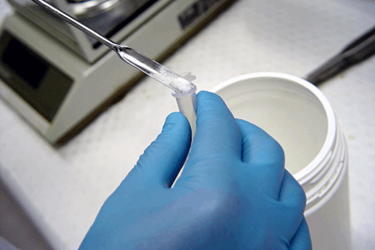Are You Prepared For The Upcoming USP <800> Requirements?
By Christopher J. Smalley, compounding pharmacist advisor, ValSource

The United States Pharmacopeial Convention (USP) has developed a chapter on hazardous drug (HD) handling in healthcare, USP <800>, which will become effective on July 1, 2018. For facilities that handle hazardous drugs, there’s no time to waste in working toward compliance, because facility design/redesign and construction may be necessary to achieve it. USP chapters numbered less than <1000> are requirements, not guidelines, in the United States, so compliance is necessary.
Determining If USP <800> Applies To Your Facility
If you are unsure whether this chapter applies to your facility, consider the answer given on the USP’s Frequently Asked Questions (FAQ) page for USP <800>: “The purpose of this chapter is to describe the practice and quality standards for handling hazardous drugs in healthcare settings and help promote patient safety, worker safety, and environmental protection.” Thus, all entities that handle hazardous drugs must incorporate the standards of this chapter into their occupational safety plan. At a minimum, the health and safety management system must include:
- Engineering controls,
- Competent personnel,
- Safe work practices,
- Proper use of appropriate personal protective equipment (PPE), and
- Policies for HD waste segregation and disposal.
But what exactly is a hazardous drug (HD)? The chapter FAQ is very clear that any entity must “maintain a list of HDs that include any items on the current NIOSH list that the entity handles.” NIOSH, the National Institute for Occupational Safety and Health, maintains a hazardous drug list at https://www.cdc.gov/niosh/topics/hazdrug/.
It might come as a surprise that the list contains many non-antineoplastic drugs, including paroxetine, phenytoin, risperidone, and spironolactone.
It is important to point out that California represents an exception to the timeline and scope of USP <800>. California has decided to move up implementation for entities in the state to July 1, 2017. Additionally, rather than use the NIOSH list, the state is requiring each entity to be responsible for compiling its own list of HDs. However, I would suggest that California-based entities rely on the NIOSH listing, rather than expending the effort to develop and justify a unique list.
What USP <800> Compliance Will Look Like
Compliance with UPS <800> will require facilities to complete and implement the following:
- A list of HDs for the facility — This includes new items as they are introduced to the facility such as new products, new chemical entities, and new biological entities that meet the criteria for toxicity or harm.
- A hazardous risk assessment — It is not enough to know that a product is a HD; it is equally important to understand how it poses a risk (or risks). Does inhalation of the powder form the risk? Or does absorption through the skin as a liquid form the risk?
- A plan to address the hazards — This includes:
- Engineering solutions
- Procedures and personnel training
Curiously, the new USP chapter includes very specific directions about acceptable engineering solutions. Why such specific directions? There is an inherent conflict in handling sterile drugs that are also HDs. A key objective in handling sterile drugs is to protect their sterility, and the personnel handling the sterile drug pose the greatest risk to that sterility. On the other hand, the substance also poses a hazard to the personnel, so the personnel need to be protected from the HD. Laminar (unidirectional) air flow has long been the principle strategy in protecting product sterility during processing, yet it is capable of literally blowing the HD into the face of a person handling the substance.
Key engineering solutions listed in USP <800> include:
- All processing of an HD substance must be done in a negative pressure room.
- The anteroom to the negative pressure room must be positive pressure.
- Containment primary engineering control (C-PEC) should be used if the HD is other than a final dosage form that does not produce particles, aerosols, or gases. C-PEC options include:
- Class II biological safety cabinet
- Compounding aseptic containment isolator
A containment segregated compounding area (C-SCA) can be used as a secondary engineering control for the preparation of low- to medium-risk HDs. (Note: This was not permitted by USP <797>.) As a containment secondary engineering control (C-SEC), the C-SCA must be externally vented.
When originally drafted, USP <800> intended that such exterior venting would be performed using a HEPA filter. However, to ensure that adequate exhaust is achieved for negative pressure in the compounding area, the requirement for HEPA filtration of the exhaust was removed. The resistance of a HEPA filter can slow the exhaust flow, particularly if the filter “loads” over time. I recommend using HEPA filters on the exhausts for areas where HDs are compounded, with adequate safeguards to assure that negative pressure in the compounding area is maintained.
Many of these engineering solutions are intended to address exposure to an HD when processing. However, USP <800> addresses the entire supply chain for the HD. Considerations include:
- How is the HD or drug substance received?
- Is it properly labeled by the supplier?
- Receiving areas cannot be positive pressure.
- How can the HD be stored?
- How do areas that have been exposed to HD get cleaned?
- Deactivate with an EPA-approved oxidizer intended for use with HD.
- Clean with a germicidal detergent.
- Disinfect with filtered alcohol.
Important Takeaways For Pharmaceutical/Biopharmaceutical Manufacturers
Any entity that manufactures pharmaceuticals or biopharmaceuticals for the healthcare setting should review its products against the NIOSH list to determine if any are HDs. For injectable HD products, the manufacturer should consider preparing the dosage form packaging to facilitate use with closed-system drug-transfer devices (CSTDs). The USP chapter requires CSTDs for administration, but only recommends them for compounding. A product ready for use with CSTDs will have an advantage in the marketplace for healthcare facilities upon implementation of USP <800>.
Additionally, entities that manufacture pharmaceuticals/biopharmaceuticals for healthcare use will need to package and label those HD products to assist healthcare facilities in identifying their risks. Labeling should include “Hazardous Substance: Handle and Dispose of Properly” or a similar warning, and should be packed in containers or materials that minimize the chance of breakage or leakage. An inner plastic bag should be used where appropriate.
Again, it is important to review USP <800> to determine if your facility is within scope, and if so, prepare a risk assessment and a plan for compliance. It will be impossible to achieve compliance by next July without significant planning, facility changes, and training.
About The Author:
 Chris Smalley recently retired from Merck, where he had responsibility for innovative implementation and validation, including single-use systems, globally. Previously, he was director of quality operations for Wyeth Pharmaceuticals for 12 years, with responsibility for setting validation standards and validation activities globally. His research experience includes responsibility for quality in the U.S. operations of the Sanofi Research Division, and earlier he worked for the Johnson & Johnson family of companies, where he was a plant manager. Chris is a graduate of the Philadelphia College of Pharmacy of the University of the Sciences in Philadelphia. His graduate education includes an MBA from Temple University’s Fox School of Business and an MS in pharmaceutical chemistry from Temple University School of Pharmacy.
Chris Smalley recently retired from Merck, where he had responsibility for innovative implementation and validation, including single-use systems, globally. Previously, he was director of quality operations for Wyeth Pharmaceuticals for 12 years, with responsibility for setting validation standards and validation activities globally. His research experience includes responsibility for quality in the U.S. operations of the Sanofi Research Division, and earlier he worked for the Johnson & Johnson family of companies, where he was a plant manager. Chris is a graduate of the Philadelphia College of Pharmacy of the University of the Sciences in Philadelphia. His graduate education includes an MBA from Temple University’s Fox School of Business and an MS in pharmaceutical chemistry from Temple University School of Pharmacy.
Chris has been a member of the PDA Board of Directors, as well as a member of the PDA Science Advisory Board. Currently he is a member of the ISPE Disposables Community of Practice (COP). You can reach him at camalley@valsource.com or on LinkedIn.
